一、发展
1989年,Yann LeCun提出了一种用反向传导进行更新的卷积神经网络,称为LeNet。
1998年,Yann LeCun提出了一种用反向传导进行更新的卷积神经网络,称为LeNet-5
AlexNet,VGG,GoogleNet,ResNet
二、AlexNet
AlexNet是2012年ISLVRC 2012(ImageNet Large Scale Visual Recognition Challenge)竞赛的冠军网络,分类准确率由传统的 70%+提升到 80%+。 它是由Hinton和他的学生Alex Krizhevsky设计的。也是在那年之后,深度学习开始迅速发展。
ISLVRC 2012
训练集:1,281,167张已标注图片
验证集:50,000张已标注图片
测试集:100,000张未标注图片

该网络的亮点在于:
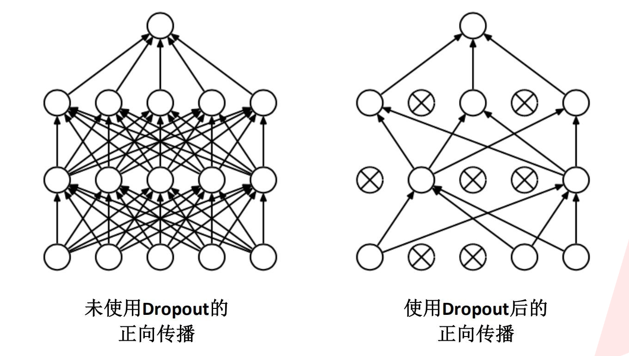
过拟合:根本原因是特征维度过多,模型假设过于复杂,参数过多,训练数据过少,噪声过多,导致拟合的函数完美的预测 训练集,但对新数据的测试集预测结果差。 过度的拟合了训练 数据,而没有考虑到泛化能力。
1.1 AlexNet详解
网络分为上下两层,用两个GPU同时在跑
第一层卷积:
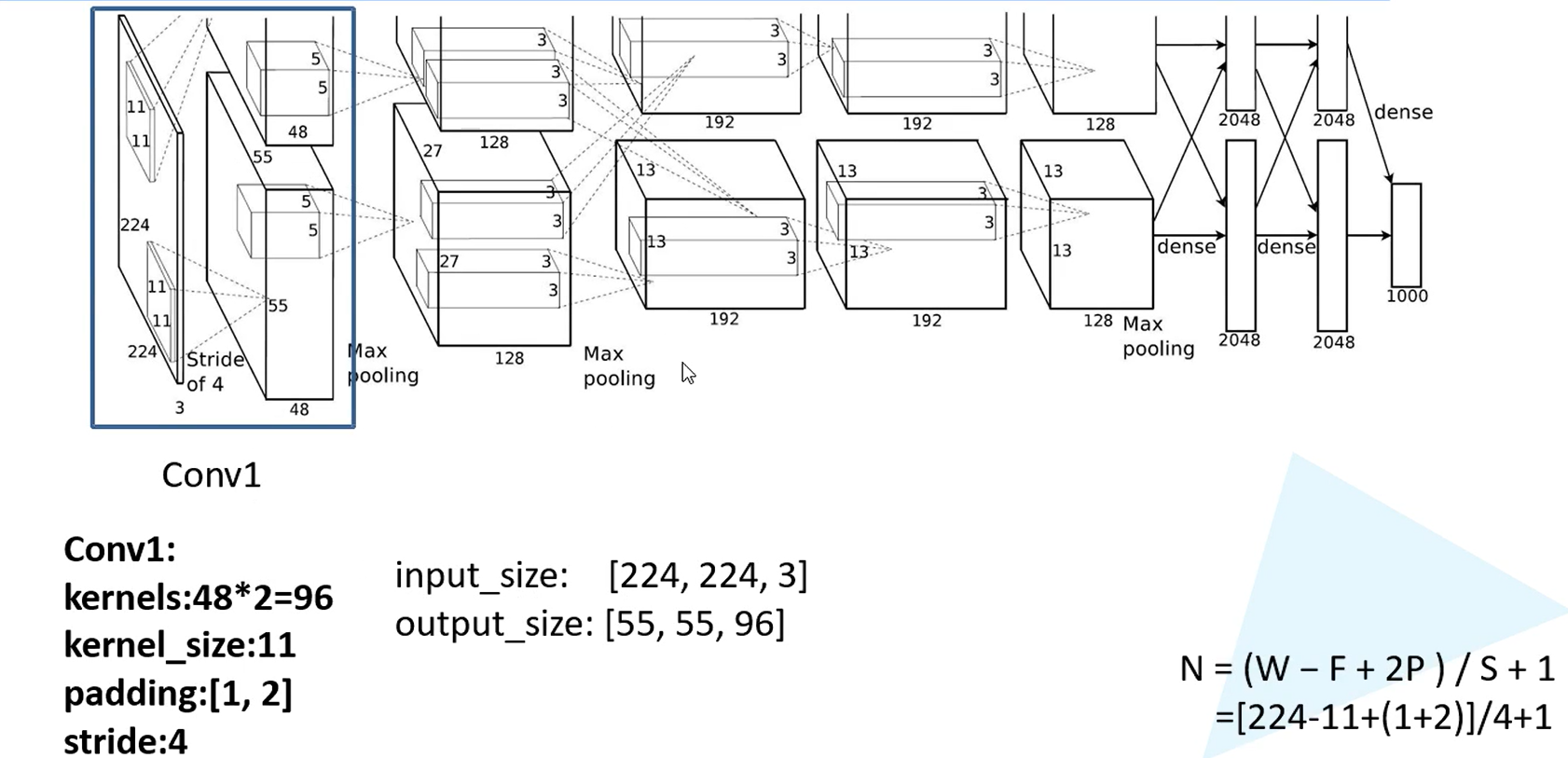
两个GPU跑,卷积核是48*2
padding [1,2] 是左边一列0,右边两列0,上边一行0,下面两行0
经卷积后的矩阵尺寸大小计算公式为:N = (W − F + 2P ) / S + 1
① 输入图片大小 W×W
② Filter大小 F×F
③ 步长 S
④ padding的像素数 P
第二层maxpool:

第三层卷积:
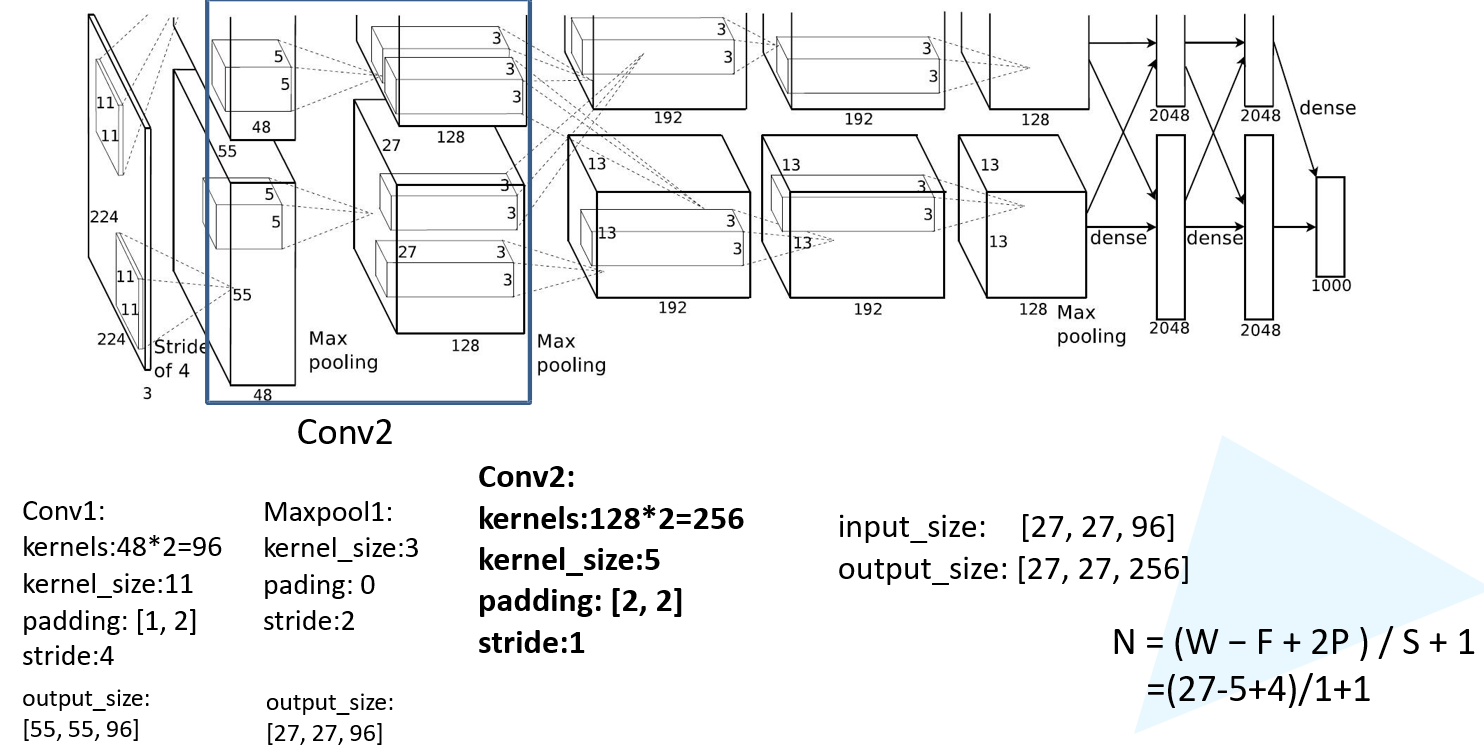
第四层maxpool:

第五层卷积:

第六层卷积:
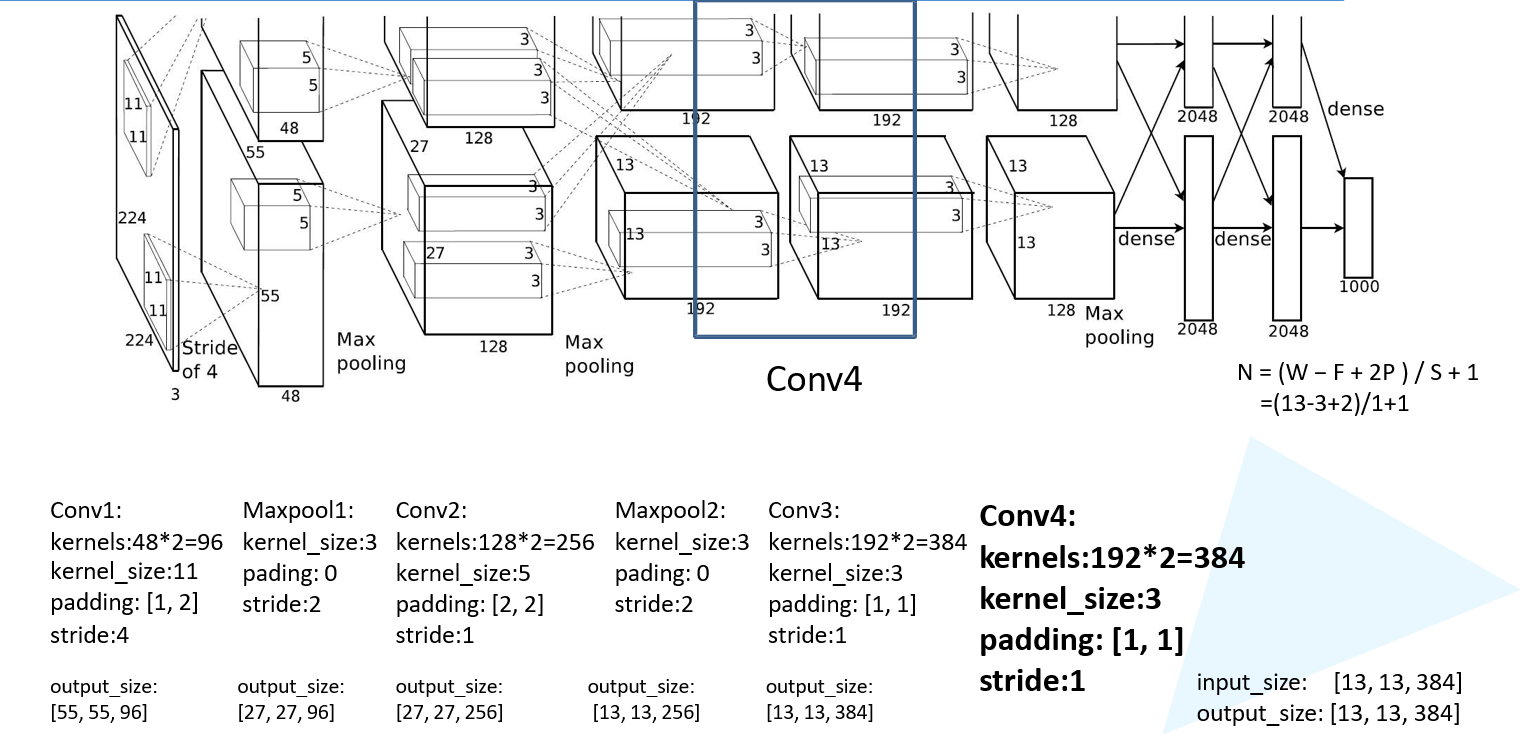
第七层卷积:

第八层maxpool:
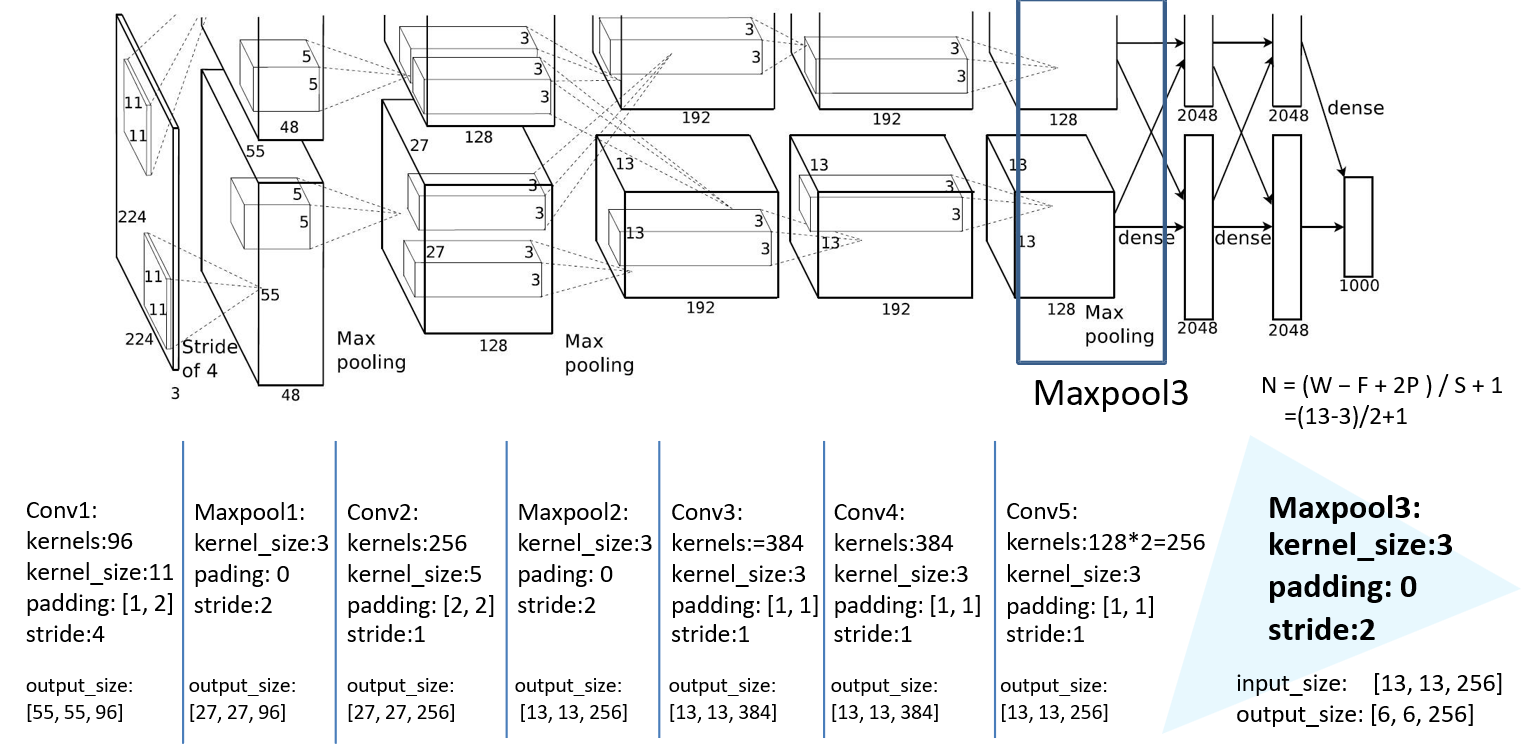

1.2 AlexNet实现
模型实现
from tensorflow import keras
import tensorflow as tf
import numpy as np
import pandas as pd
import matplotlib.pyplot as plt# 函数式和子类.
def AlexNet(im_height=224, im_width=224, num_classes=1000):input_image = keras.layers.Input(shape=(im_height, im_width, 3), dtype=tf.float32)# 手动paddingx = keras.layers.ZeroPadding2D(((1, 2), (1, 2)))(input_image)x = keras.layers.Conv2D(48, kernel_size=11, strides=4, activation='relu')(x)x = keras.layers.MaxPool2D(pool_size=3, strides=2)(x)x = keras.layers.Conv2D(128, kernel_size=5, padding='same', activation='relu')(x)x = keras.layers.MaxPool2D(pool_size=3, strides=2)(x)x = keras.layers.Conv2D(192, kernel_size=3, padding='same', activation='relu')(x)x = keras.layers.Conv2D(192, kernel_size=3, padding='same', activation='relu')(x)x = keras.layers.Conv2D(128, kernel_size=3, padding='same', activation='relu')(x)x = keras.layers.MaxPool2D(pool_size=3, strides=2)(x)#全连接# 前面不管几维,都变成2维x = keras.layers.Flatten()(x)x = keras.layers.Dropout(0.2)(x) #随机去掉20%神经元x = keras.layers.Dense(2048, activation='relu')(x)x = keras.layers.Dropout(0.2)(x) #随机去掉20%神经元x = keras.layers.Dense(2048, activation='relu')(x)x = keras.layers.Dense(num_classes)(x) #num_classes 最后输出类别# 预测predict = keras.layers.Softmax()(x)model = keras.models.Model(inputs=input_image, outputs=predict)return model数据准备
train_dir = './training/training/'
valid_dir = './validation/validation/'# 图片数据生成器
train_datagen = keras.preprocessing.image.ImageDataGenerator(rescale = 1. / 255,rotation_range = 40,width_shift_range = 0.2,height_shift_range = 0.2,shear_range = 0.2,zoom_range = 0.2,horizontal_flip = True,vertical_flip = True,fill_mode = 'nearest'
)height = 224
width = 224
channels = 3
batch_size = 32
num_classes = 10train_generator = train_datagen.flow_from_directory(train_dir,target_size = (height, width),batch_size = batch_size,shuffle = True,seed = 7,class_mode = 'categorical')valid_datagen = keras.preprocessing.image.ImageDataGenerator(rescale = 1. / 255
)
valid_generator = valid_datagen.flow_from_directory(valid_dir,target_size = (height, width),batch_size = batch_size,shuffle = True,seed = 7,class_mode = 'categorical')
print(train_generator.samples)
print(valid_generator.samples)训练
model = AlexNet(im_height=224, im_width=224, num_classes=10)
model.summary()model.compile(optimizer='adam',loss='categorical_crossentropy',metrics=['acc'])history = model.fit(train_generator,steps_per_epoch=train_generator.samples // batch_size,epochs=10,validation_data=valid_generator,validation_steps = valid_generator.samples // batch_size)



















)